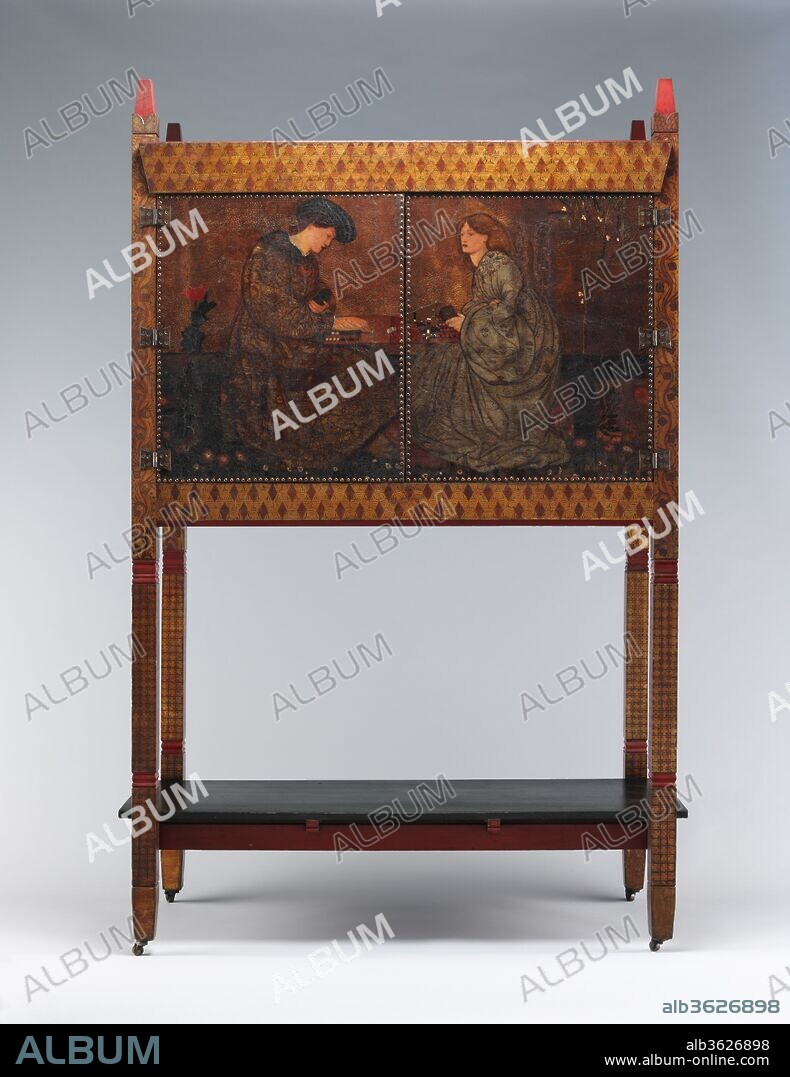alb3626898
PAINTED BY SIR EDWARD BURNE-JONES. The backgammon players

|
Ajouter à une autre Lightbox |
|
Ajouter à une autre Lightbox |



Avez-vous déjà un compte? S'identifier
Vous n'avez pas de compte ? S'inscrire
Acheter cette image.
Sélectionnez l'usage:

Titre:
The backgammon players
Légende:
Voir la traduction automatique
The Backgammon Players. Artist: Painted by Sir Edward Burne-Jones (British, Birmingham 1833-1898 Fulham). Culture: British. Designer: Philip Webb (British, Oxford 1831-1915 West Sussex). Dimensions: Overall: 73 × 45 × 21 in. (185.4 × 114.3 × 53.3 cm). Manufacturer: Morris, Marshall, Faulkner & Co.. Date: 1861.
This early masterpiece of the Arts and Crafts Movement exemplifies the collaborative endeavors of William Morris and his circle to improve design standards. Morris believed that a return to the principles of medieval production, with fine artists creating functional objects, could help overcome the evils of industrialization. This cabinet, one of several in which Morris enlisted the participation of Sir Edward Burne-Jones, is an attempt to erase the distinction between the fine and the applied arts. The painting on leather with a punched background is itself a craftsman's medium.
Although the cabinet is usually described as in the "medieval style," it is actually a vivid example of the ability of the Morris firm to convert the eclecticism that marked much of the art of the late nineteenth century into an original and modern style. Although Burne-Jones's painted figures are in medieval costume much of the decoration is equally Oriental in inspiration. Philip Webb's straightforward design, however, which boldly displays the casework skeleton on the exterior, anticipated the emphasis on structural elements that would inform the design revolution of the next century.
Technique/matériel:
Painted pine, oil paint on leather, brass, copper
Musée:
Metropolitan Museum of Art, New York, USA
Crédit:
Album / Metropolitan Museum of Art, NY
Autorisations:
Taille de l'image:
3240 x 4200 px | 38.9 MB
Taille d'impression:
27.4 x 35.6 cm | 10.8 x 14.0 in (300 dpi)
 Pinterest
Pinterest Twitter
Twitter Facebook
Facebook Copier le lien
Copier le lien Email
Email
